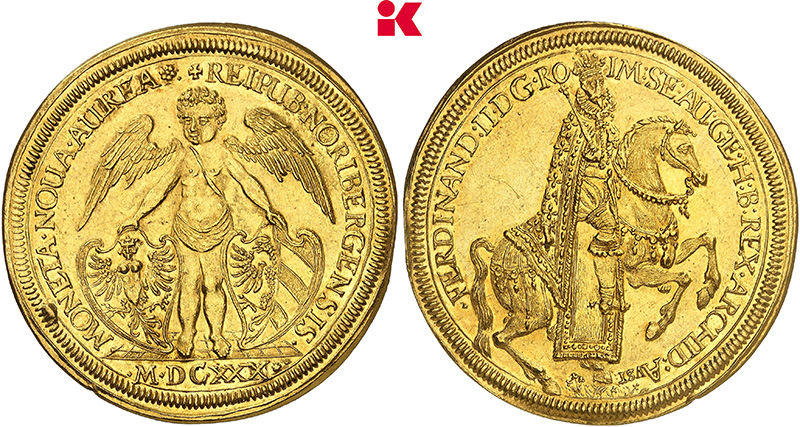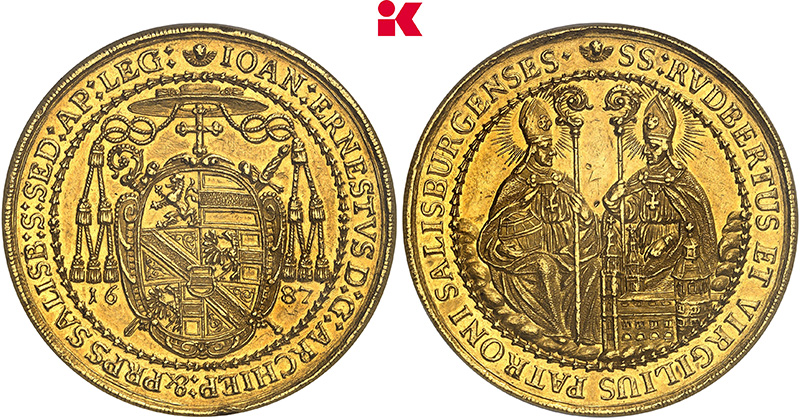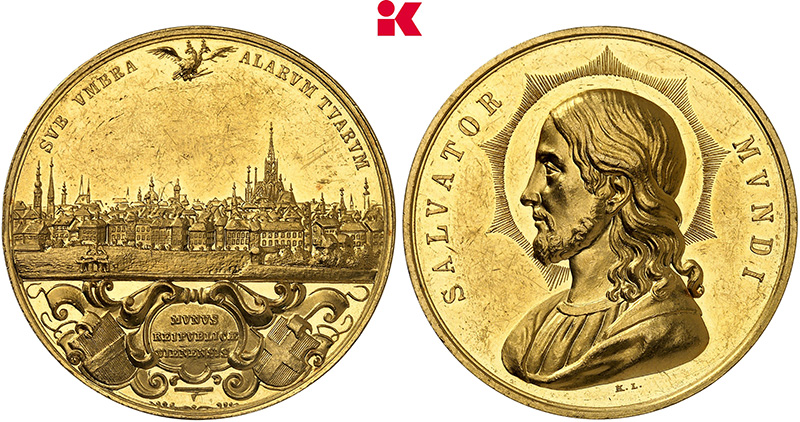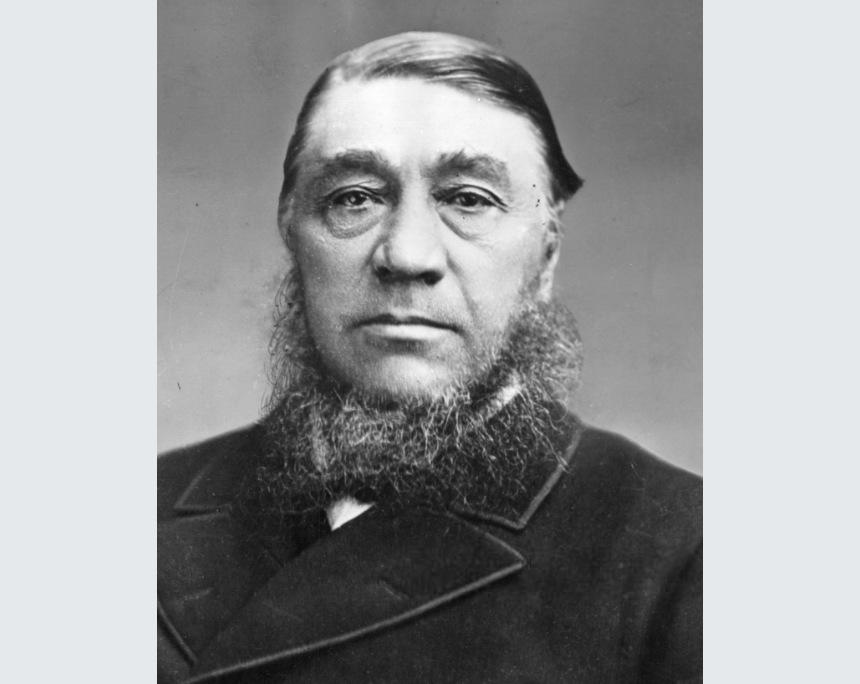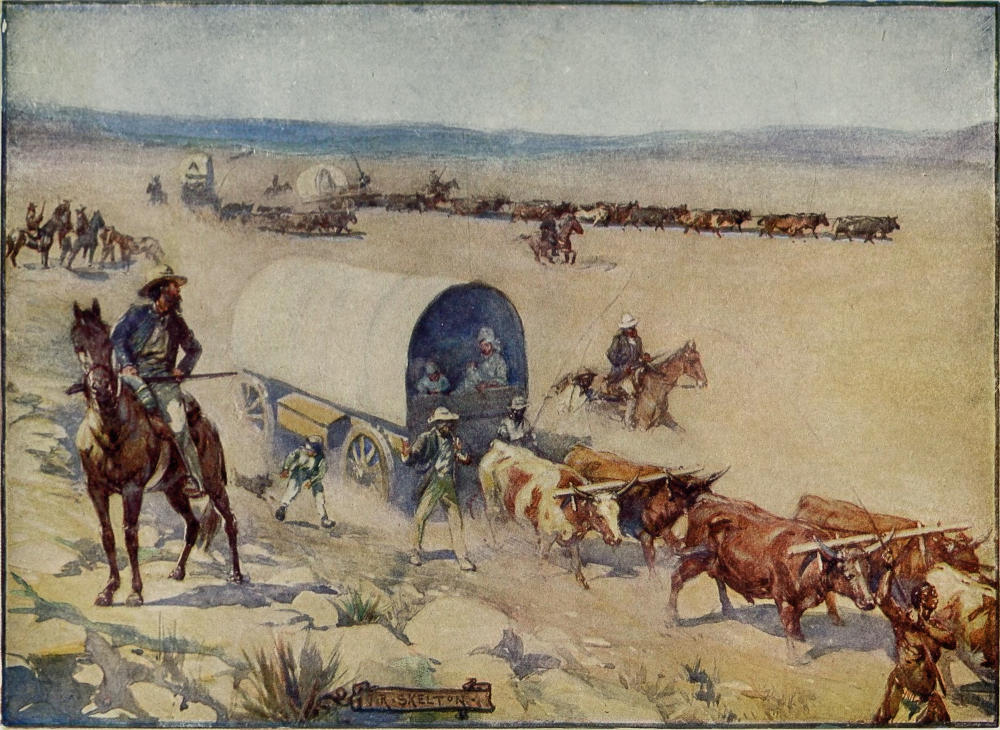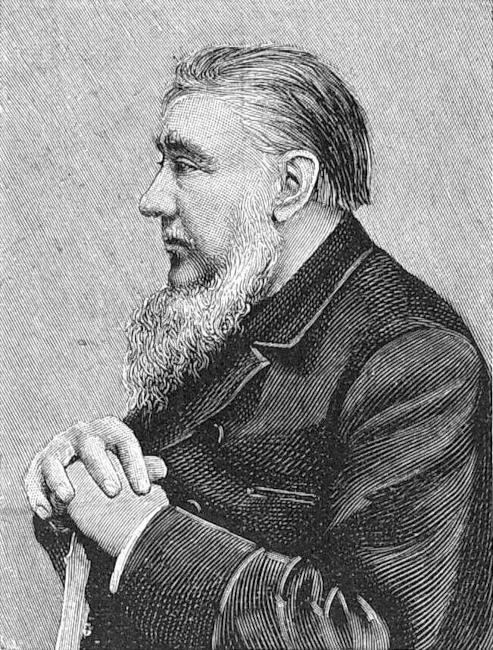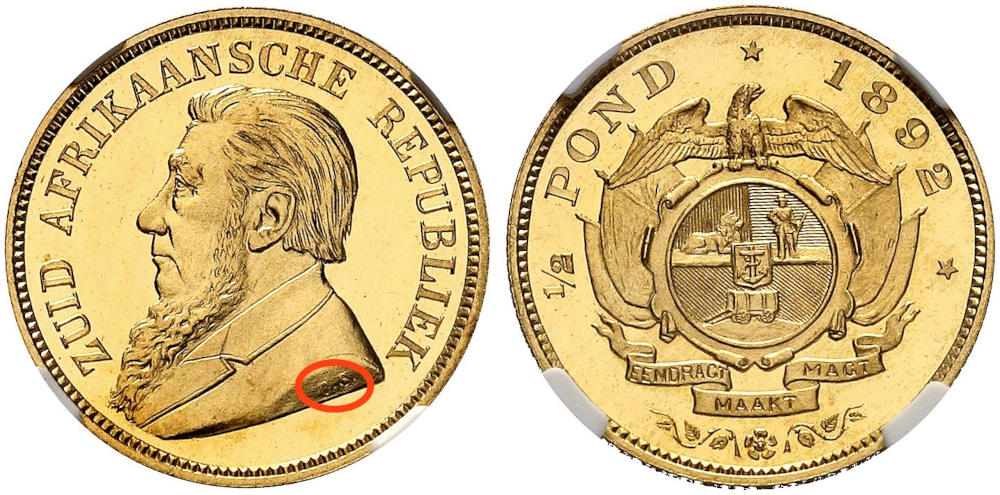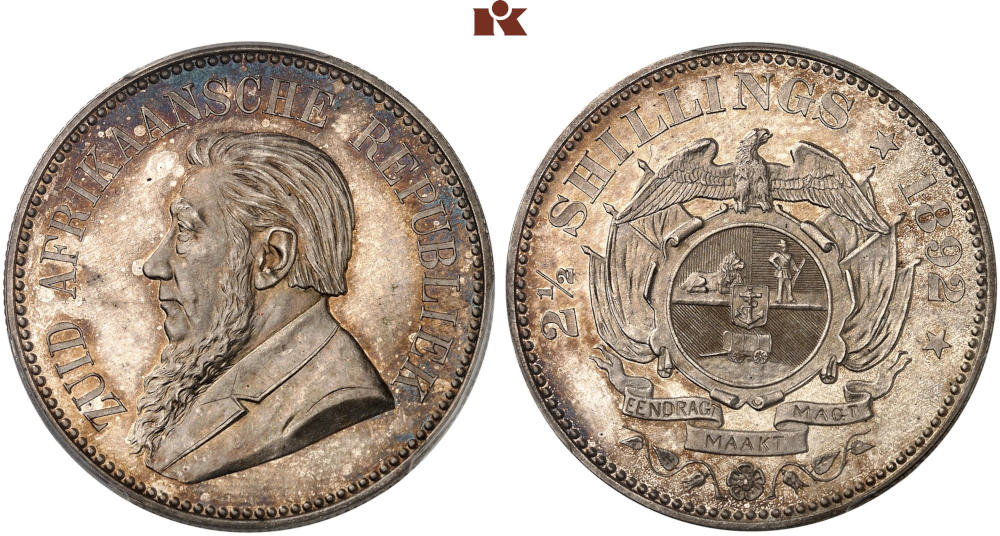Friedrich Wilhelm, the Great Elector.
Ducat 1686 LCS, Berlin.
Extremely rare.
Attractive piece.
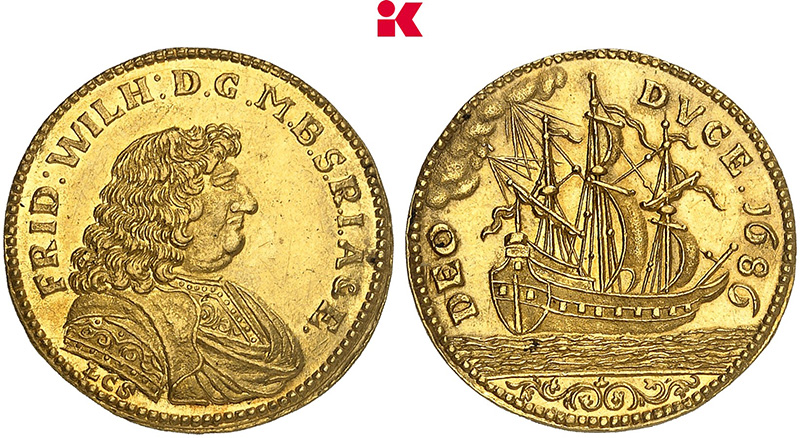

Maximilian II.
Ducat 1855.
Only a few pieces are known.
Extremely fine-uncirculated.

Ferdinand Albrecht I.
Löser in the weight of 4 Reichstalers 1670, Clausthal.
Extremely rare.
Attractive piece.
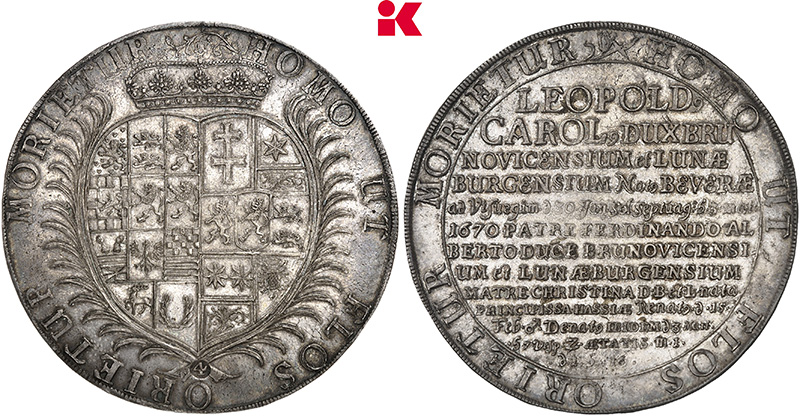
Friedrich Adolf.
5 Ducats 1711, Detmold.
Only known piece.
Extremely fine-uncirculated.
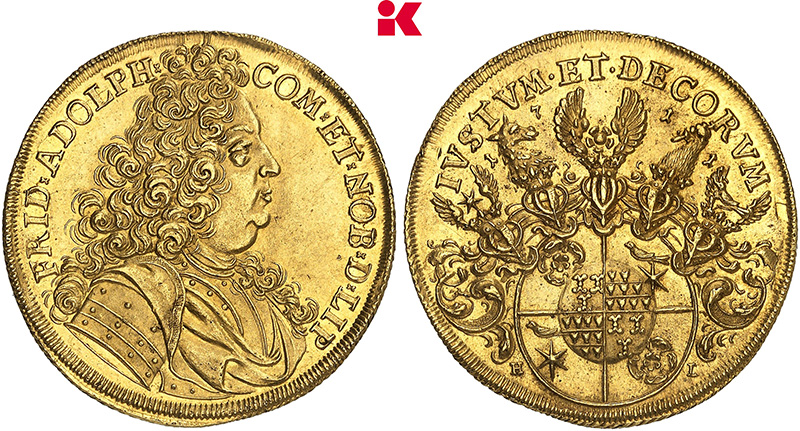
6 Ducats, n. d. (1765-1790), with the title of Joseph II.
NGC MS 62 PL.
Extremely rare.
Attractive piece from polished dies.
Almost uncirculaed.

Johann Adolf, 1590-1616.
Portugalöser (10 ducats) n.d., Eutin.
Extremely rare and of particular
significance in monetary history.
Attractive piece.

Leopold I, 1657-1705.
20 Ducats, n. d. (after 1666), Hall,
by M. König.
Extremely rare.
Almost extremely fine.
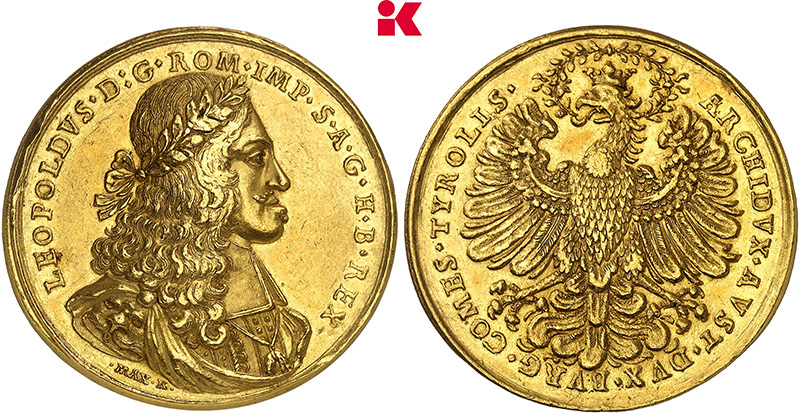
Berlin and South Africa – A Time-Honoured Connection
By Ursula Kampmann
Did you know that the first coins of the Boer Republic came from Berlin? It was quite a challenge to create the dies because the Berlin engraver Otto Schulz had no idea of Boer identity, which is why things almost went wrong…
Content
In 1892, a joke was making the rounds all over South Africa. The new coins had finally been put into circulation. On the obverse, they showed the country’s president, Stephanus Johannes Paulus Kruger, better known as Oom Paul or Uncle Kruger (“Oom” means “uncle” in Afrikaans). He was facing an election at the time and had hoped the coins would give him an extra boost of support. But then some rascal had managed to inscribe the letters “OS” under Kruger’s portrait on every coin – which, in Afrikaans, means “ox” or “idiot.” How could such an insult happen?
The Roots of the Boer Republic
To understand that, we have to go far back in time to the roots of the Zuid-Afrikaansche Republiek, at the Cape of Good Hope. The first Dutch settlers had arrived there as early as the mid-17th century. They were strict Calvinists who believed in a divine mission and that their hard work and success proved they were God’s chosen children. They had nothing but contempt for the Black people who had lived on the land before them. After all, these “savages” refused to adopt the Boer way of life and work ethic – surely proof, in their eyes, that God had created them as born servants of the white man.
Many Europeans believed that at the time. But in some countries – mostly for economic rather than moral reasons – attitudes began to shift. One of those countries was Great Britain, which had taken control of the Cape Colony in the early 19th century. The abolition of slavery, combined with the growing sense of being oppressed by the British government, became a reason for many Boers to turn their backs on the Cape and head north on the Great Trek in search of a promised land.
Among them was a ten-year-old boy named Paul Kruger. He got his name from a Berlin ancestor who had arrived in the region as a mercenary for the Dutch East India Company in 1713. Otherwise, he was a typical Boer child, raised on the edge of civilization and trained to survive.
Survival meant not only working hard for daily bread but also fighting the land’s original inhabitants, the Ndebele. Kruger proved gifted in that regard. He stood out as an organizer and commander, eventually being elected General Commandant of the Boer forces in the Republic of Transvaal (founded in 1839) in 1864.
In 1871, Johannes Nicolaas de Beer discovered a diamond on his farm in Transvaal, sparking the greatest diamond rush in history. In 1877, the British attempted to annex Transvaal but were defeated and forced to recognize its independence in 1881. Paul Kruger was elected the first president of the new Boer state in 1883.

Zuid Afrikaansche Republiek. 1/2 Pound 1892, Berlin. Extremely rare. Only 20–25 pieces struck. From SINCONA auction 50 (2018), No. 1207
Gold in the Witwatersrand
By the mid-1890s, it became clear that the Zuid-Afrikaansche Republiek sat on vast gold reserves, located in the Witwatersrand. This gave President Kruger the financial means to initiate the minting of coins. At his request, the parliament (Volksraad) passed a law that allowed Dutch, German, and British investors to establish a national bank for Transvaal. It was also decreed that the South African currency should follow the British model in terms of denominations, appearance, fineness, and weight. Since the country had no mint of its own, the decision was made to have the first Zuidafrikaansche Ponds minted in Berlin and to bring them into circulation ahead of the upcoming presidential election.
A Major Blunder
But what seemed like a good idea turned into a public relations disaster. Otto Schultz, the die cutter at the Berlin Mint responsible for designing the coins, made a major blunder – and did so in complete innocence. As was standard in Europe, he signed Kruger’s portrait with his initials, O.S. Schultz had no idea that “os” meant “ox” or “idiot” in Afrikaans.
That was, of course, not great election advertising for Oom Kruger. His political opponents took full advantage of the German engraver’s mistake and ridiculed Kruger to the point where he almost lost the election.
Of course, the mistake was quickly corrected, and in a second issue, the O.S. signature was removed. Only a few collector specimens from the first issue have survived to this day.
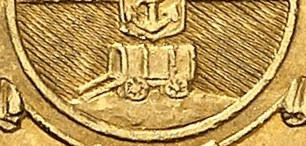
Detail of Zuid Afrikaansche Republiek. 1 Pound 1892, Berlin. From Künker auction 336 (2020), No. 6375
Incidentally, there was a second error on this first Kruger Pond. Instead of using the South African version of the trek wagons – with a single shaft and much larger rear wheels – Schultz had depicted a European-style wagon with a double shaft and four equal-sized wheels.
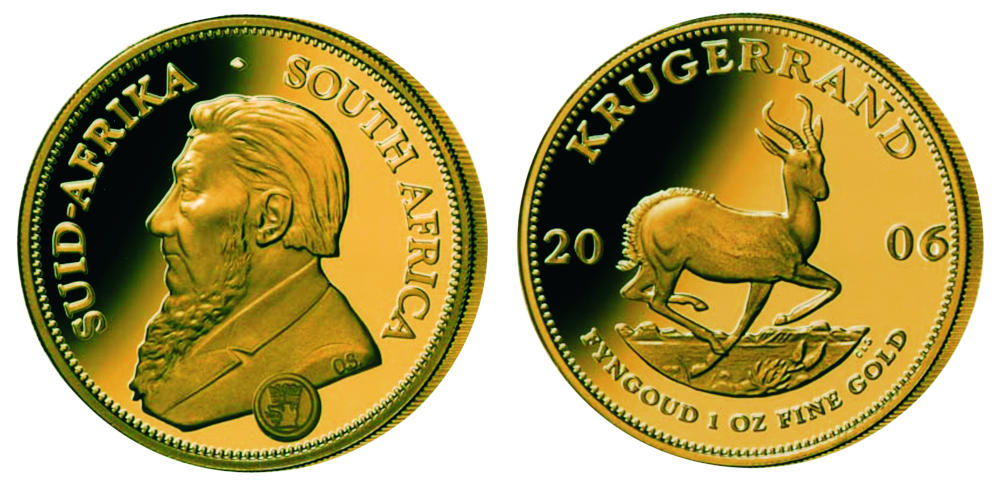
Krugerrand 2006, minted in Berlin with Berlin Bear mintmark for the World Money Fair guest of honor: South Africa.
Renewed Ties Between the Berlin Mint and South Africa
During preparations for the 2006 World Money Fair, representatives of the South African Mint and the Berlin Mint met. Naturally, they talked about their historic connection. That led to the idea of minting a Krugerrand in Berlin. It’s distinguishable by the mintmark – the head of the Berlin Bear – and the logo of the Berlin Mint.
The End of the Zuid-Afrikaansche Republiek
Back to the gold discoveries at the Witwatersrand in the 1890s. They had once again sparked British interest in the Transvaal. Cecil Rhodes, who had been Prime Minister of the British Cape Colony since 1890, incited British immigrants who had settled in the Zuid-Afrikaansche Republiek to rise up against Kruger’s government. To support them, he sent a troop of 600 soldiers. But Rhodes had overestimated his influence. His men were defeated, the rebellious “Uitlanders” (= foreigners) were captured, and some were even killed. Rhodes was forced to resign as Prime Minister in 1896.
Unfortunately, the gold finds at the Witwatersrand were too substantial for Britain’s greed to fade so quickly. In 1899, Kruger received a new ultimatum, this time from the British government itself. They demanded that he immediately grant voting rights to all foreigners living in his republic. In response, Kruger declared war on Great Britain on October 11, 1899 – a mistake, as it would soon become clear.
The British government had far more resources at its disposal than Cecil Rhodes ever had. Kruger realized he needed help, and in 1900, he traveled to Europe to seek support in the Netherlands and Germany. But neither the Dutch queen nor the German emperor found it worthwhile to risk a war with Britain for the sake of the Boers. Kruger remained in Europe and died in 1902 while in exile in Clarens, Switzerland.
The Boers lost the war – but Britain had also miscalculated. Their brutal conduct of the war even turned many of their own citizens to the Boers’ side. The British were forced to make concessions, granting the Boers political equality within the newly established democracy – in stark contrast to the Black South Africans who had fought on Britain’s side. This gave the Boers the ability to use their numerical advantage to shape South African politics according to their own vision.







